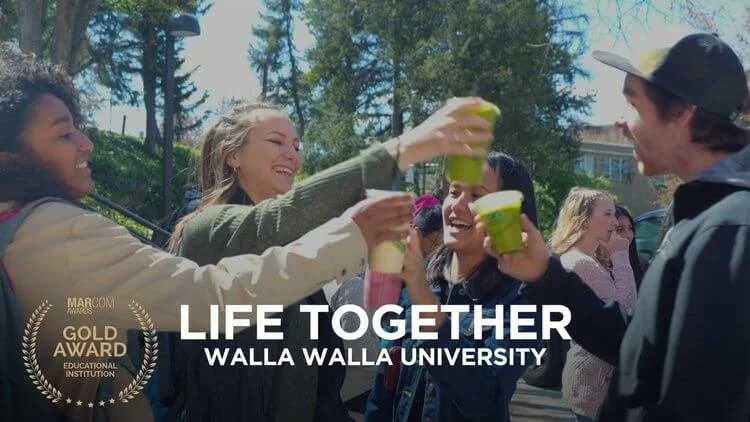An Inside Look at a Website Redesign
Have you ever been completely taken in by a website, but couldn’t really say why?
That’s because many of the visual cues are recognized subconsciously, rather than consciously. These include data-driven cues, color, call to action placement, type choice and format, and images.
A good website creator will pay scrupulous attention to these and other tried-and-true techniques when they develop a new website.
The Secret Ingredients to Getting Better Results From Your Social Media
20 Interview Questions On Leadership That Can Help You Evaluate A Prospective Employee
A Behind-the-Scenes Look at a Website and Visual Brand Makeover
Communication has never been more important to businesses and organizations. A company’s website is probably the most important marketing and sales tool available. It’s important to update stagnant designs after five years or more.
CMBell recently redesigned the visual brand for Stella’s Homestead, and in this entry, we’ll take you behind the scenes on some of the work that led up to this.
12 Kinds of Videos Your Viewers Will Love in 2021
Getting heard is getting harder, and having a strong digital presence has never been more important.
Whether you want to build culture, increase online presence, or win customers, video outperforms all other media in getting viewed and remembered and should be part of your current marketing strategy.
9 Ways Leaders Can Use Communication to Build Trust
10 Ways to Make Your Presentation Unforgettable
The way we adapt to the crowded world of communication is by evaluating a message in a matter of seconds to see if it interests us. If it doesn't, we move on. Your job as a presenter, then, is to make it as rewarding and easy as possible for your viewer to grasp your message.
Here are 10 things you can do right now to improve your PowerPoint or other presentations:
How Two of Your Company's Web Pages Could Be Hurting Your Business [and What You Can Do About It]
Why are the “Job” and the “About Us” pages so frequently lackluster on business websites?
For most, it's probably a practical reason. Once that content is developed, there's generally little reason to revisit it. It falls into that perilous category of important but not urgent, and there it languishes—missing untold opportunities to persuade, compel, and sell.
More Than a Mission Statement: How a Mantra Can Build Your Brand and Culture
Words and images are powerful tools for building a company’s culture. And yet they are too often underused in business.
While mission and values are at the center of an organization’s culture-building language, a mantra can flesh those out. If, for example, excellence is one of your values, a mantra can focus attention on how excellence occurs.
Why Video is a Must-Have Tool For Executives
Is Video A Waste of Money?
8 Unexpected Ways Businesses are Experiencing the Power of Video Storytelling
We know that stories are what move the human heart. This has been true since the dawn of time, and is true for individuals as well as businesses. As humans, we are especially drawn to stories that feel true, authentic, and well-told. And when delivered with the power of music, motion, and imagery via video, a story’s impact is multiplied.
How Video Can Help Your Company Build Trust
10 Ways to Create a Winning Annual Report
Your annual report may be your most important communication tool—It offers a snapshot of company performance, shows how you're creating value for your stakeholders, and offers a glimpse into the purpose that drives your organization.
To get the most from your investment, design your annual report as both a marketing tool and a reporting tool that can reach shareholders, employees, and customers.
Is Your Company's Online Presence Working? The Quick Test
For most businesses, it’s very likely that customers will interact with your company more online than in-person. It's also the case that nearly everyone searching online for your type of business won't get past the first page of Google results; and once they visit your website, they won't stick around if they can't immediately find what they are looking for.
Is 2018 going to be your best year ever? [7 Tips]
14 Tips on Communicating with Employees During Layoffs, Mergers, or Other Times of Change
Are you in the midst of layoffs? Budget-cuts? A merger or acquisition?
If you are downsizing, then you know the anxiety it produces among employees and the way it impacts morale, productivity, and customers. Communication during these times is a powerful tool that can help keep your employees engaged during difficult times. Here are 14 internal communication tips we’ve seen work during difficult times:
How Communication Can Build a Values-Driven Culture
There’s no better way to bring your mission and values off your walls and into your halls than by showing your leaders and employees walking the talk.
And there’s no better communication tool than video to build a values-driven culture. Video can capture symbolic moments in which people bring values to life in authentic ways—and spread the role-modeling throughout the organization.
8 Ways to Create Authentic Patient Video Stories
In today’s market, video marketing is an essential—and nothing works like a riveting patient story.
But not all patient video stories are created equally. Some feel flat, boring, too promotional or too predictable, while others depict a relatable experience and compel the viewer to feel connected to the organization.














![How Two of Your Company's Web Pages Could Be Hurting Your Business [and What You Can Do About It]](https://images.squarespace-cdn.com/content/v1/520ae1d7e4b0734e32e175ff/1550591859318-98TJUVXXESXZP6Y5ZMYM/airbnb.imac-3+2.jpg)







![Is 2018 going to be your best year ever? [7 Tips]](https://images.squarespace-cdn.com/content/v1/520ae1d7e4b0734e32e175ff/1516824508143-OOH8D94BRFZHA1WHNEK6/header14.jpg)


